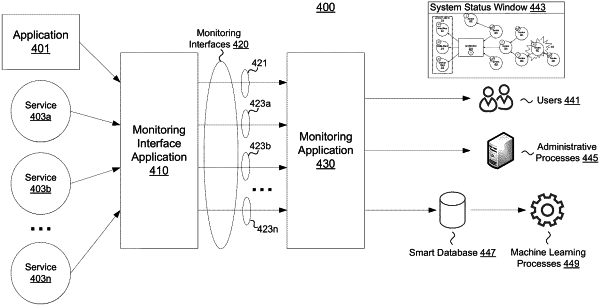| CPC G06F 11/3672 (2013.01) [G06N 20/00 (2019.01)] | 37 Claims |

|
1. A computer-implemented method comprising:
configuring a monitoring application to monitor a first application and a plurality of dependencies of the first application using a plurality of monitoring interfaces;
detecting, by the monitoring application and based on the plurality of monitoring interfaces, a current operating status of the first application and the plurality of dependencies;
generating, using a machine learning model trained to determine a likelihood that the first application will enter an unhealthy status based on one or more patterns of performance, a health report based on the current operating status of the first application and the plurality of dependencies, wherein:
each pattern of performance indicates a potential correlation between the first application entering an unhealthy status and an attribute of a dependency of the first application, and
the machine learning model is trained based on a training data set comprising a plurality of incident records, each incident record corresponding to a respective performance incident and comprising corresponding system state information corresponding to the first application and one or more of the plurality of dependencies during the performance incident;
determining, based on the health report, a first dependency, of the plurality of dependencies, that corresponds to a source of risk for the first application; and
generating a suggested action to mitigate a risk associated with the determined first dependency, wherein the suggested action is generated using the machine learning model and based on a first pattern of performance associated with the first dependency.
|